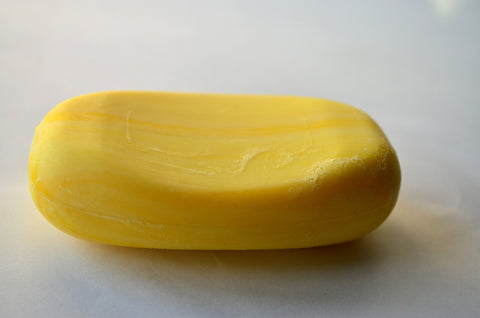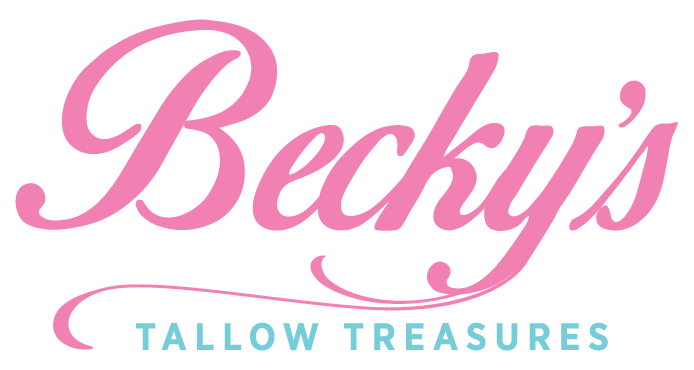
For those of you that know me, I would be very upset if I couldn't get raw milk into my diet. Raw milk, to me, is a perceived health benefit. Likewise, a survey revealed that 75% of moms with children in the household would be “angry” if the government took antibacterial soap off the market (source). But is their anger misplaced?
Detergent Cleans, But Not Sanitize
Unfortunately, most people don't know the difference between a true soap and a detergent. People call "soap" what is actually (and legally) "body wash," "shower gel," "anti-bacterial hand sanitizer" and so forth.
In short, both soap and detergent physically remove dirt and oils. Due to the nature of soap's high pH (between 8 and 10 depending on the combination of oils), soap is also bactericidal, naturally.
Detergent, however, is not bactericidal. It can only physically remove oils, and oils containing bacteria, but it can't kill them. Detergents include laundry detergent, dish detergent, hand "soap," shampoo, toothpaste, most bar "soaps" on the market, and anything else we like to “foam up.” The fault lies with it's pH. Those clever marketers spin this weakness as a strength saying that the body wash is "pH balanced." Because bacteria will thrive in that environment, detergents of all kind require a preservative.
Detergent Needs A Preservative
Common preservatives used in detergents are 'parabens which have also been found in breast tumors (source). I'm not saying that 'parabens cause cancer; although, I find it highly suspicious that the body hasn't detoxed them and is merely storing them... in it's tumor?
Detergent Adds "Anti-Bacterial" Agents
Additionally, antibacterial "soap" manufacturers have been suggesting the products are necessary to fight germs, and insinuating anti-bacterial "soaps" are superior to true soap and water in keeping away illness, for years.
In December 2013, the US Food and Drug Administration (FDA) proposed a rule stating that manufacturers must provide data to demonstrate that antibacterial "soap" is more effective than true soap and water.
Anti-Bacterial Agents... Don't Help
Regrettably, the truth told a different story. When put to the test against 20 strains of bacteria, anti-bacterial "soaps" containing the maximum legal limit of Triclosan did not out perform their true soap counterparts (source). The study’s lead researcher noted that exaggerating the effectiveness of antibacterial products should be banned, as it lies to can confuse consumers (source). In fact, health experts (whoever they are) and the FDA, now recommend against antibacterial soap due to the likelihood that its widespread use is contributing to the increase in antimicrobial resistance (source1, source2).
Another study at an elementary school showed that bacteria increased on the hands of students and staff after using the bulk "soap" dispenser. They cultured their hands before and after washing to find out the results. These are the test results from culturing their hands before (A & C), and after (B & D). I think I need to get my eyes checked because I'm seeing that detergents in our public restrooms will greatly improve one's chances of getting sick.

I'm not even going to touch on the issues that Triclosan alters endocrine function, causes fetal bone malformations, stimulates cancer cells, impairs muscle function, increases allergies, or even been found to help staph bacteria colonize in the human nose (source). Triclosan isn't the only anti-bacterial agent in detergents, either.
While detergents don't kill germs, it's additives don't help either.
Detergent Labeled As "Skin Irritant"
Now, back to the detergent. With a seemingly infinite list of detergents to choose from, I'm going to focus on sodium lauryl sulfate and sodium laureth sulfate which are commonly used in personal care products.
Sodium lauryl sulfate is a skin irritant. It damages the outer layer of skin and causes itchy, cracked, and dry skin. In shampoos, this ingredient can increase risk of scalp irritation, stinging eyes, and tangled, split, frizzy, and dull hair. For this very reason, I don't know anyone that would use shampoo without conditioner.
According to the Journal of the American College of Toxicology (1983, Vol. 2, No. 7) researchers noted, “The longer these ingredients stay in contact with the skin, the greater the likelihood of irritation, which may or may not be evident to the user.” It causes “severe epidermal changes” to the area of the skin where it was applied, causes “damage to the hair follicle," and concentrations of 1%–5% sodium lauryl sulfate produced “significant number of comedones [blackheads].” Um, isn't sodium lauryl sulfate in face wash?
The researchers concluded sodium lauryl sulfate “appears to be safe in formulations designed for discontinuous, brief use followed by thorough rinsing from the surface of the skin. In products intended for prolonged contact with skin, concentrations should not exceed 1 percent.” Maybe it's me, but I just heard never.
Often times, laundry detergents are designed to leave deposits in clothing, as optical brighteners, so clothes look whiter and cleaner than they really are. This leaves some people with skin rashes not realizing it's the detergent left in their clothing!
Detergent Includes Carcinogens
Sodium laureth sulfate, similar to sodium lauryl sulfate, is slightly different. It gets it's "eth" by adding ethylene oxide to the mixture to modify the chemical compound. While adding this ingredient is supposed to make it more gentle, it also produces “1,4-dioxane” as a byproduct. 1,4-dioxane is a known cancer agent (source) landing itself on California’s Proposition 65 list of chemicals known or suspected by the state to cause cancer or birth defects.
Of course, shampooing your hair once or twice will likely cause you no harm. The problem is, we use products with these ingredients several times a day, every day. Check your ingredient labels. You may be surprised at how many products contain sodium lauryl sulfate or sodium laureth sulfate.
As manufacturers stay ahead of what people are trying to avoid, they'll switch their ingredients. Soon it will be sodium caprylic sulfate, sodium myreth sulfate, and more. Typically, if you see one harmful ingredient, what's to stop them from adding more? Instead of trying to memorize every possible detrimental ingredient, or predicting what could be created next, it would be better to find brands that use real natural ingredients.
Thanks for reading!




Hi there. Very interesting read. I used to use a deodorant product which is now discontinued so I began to grow suspicious as to why that is the case. So this article really intrigued me. Out of interest, what do you use in place of detergents, soaps, shampoo and toothpaste?